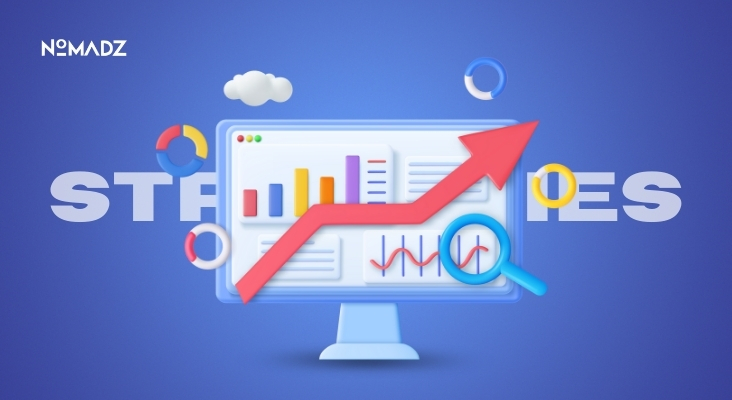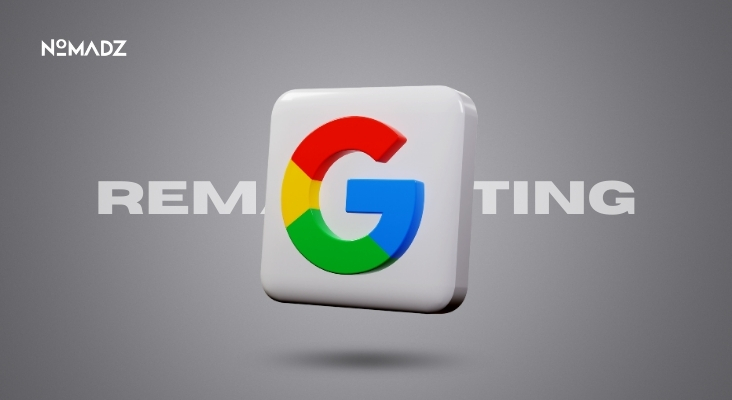Everything you need to know about Marketing Channels
Living in a digital-first world, reaching the right audience with your product or service is already half a victory. However, how can you do that effectively? At this point, marketing channels are used.
Figuring out marketing channels can help you grow faster and smarter, whether you’re a small business owner, freelancer, or trying to establish an online brand. We can simplify it all and take the most basic approach.
What Are Marketing Channels?
Let’s start with the basics – the definition of marketing channels.
Marketing channels are the means, media, or avenues through which an organization advertises and distributes its products or services to its consumers. This can comprise online and offline media, i.e., social media, email promotions, in-store displays, search, or even word-of-mouth.
Concisely, marketing channels enable a business to reach its target audience.
Why Do Marketing Channels Matter?
Think of marketing channels as bridges between you and your potential customers. In the absence of these bridges, your product can simply rest in the corner of the internet, remain unnoticed, and be idle.
Using the right types of marketing channels helps:
- Improve reach and visibility
- Boost sales
- Strengthen brand presence
- Offer better customer experiences
- Create cost-effective marketing strategies
Types of Marketing Channels
There are many types of marketing channels, and they continue to evolve over time. So, which are the most popular and effective? Let us have a look at them:
1. Digital Channels
These include:
- Social Media (Instagram, Facebook, LinkedIn)
- Email Marketing
- Websites and SEO
- Paid Ads (Google Ads, Facebook Ads)
- Influencer Marketing
The number of digital channels is vast, as they are affordable, reliable, and measurable.
2. Traditional Channels
These are the more classic channels of advertising, such as:
- Print Media (Newspapers, Magazines)
- Television & Radio
- Billboards
- Events & Trade Shows
Although they appear to be old-school, they remain strong in particular markets and local markets.
3. Direct Channels
These are companies that sell directly to customers without the involvement of middlemen, such as brand-owned outlets or internet-based stores. This approach provides organizations with greater pricing and customer experience options.
4. Indirect Channels
In this case, third parties, such as distributors, wholesalers, or retailers, handle your product. In this approach, you can scale quickly when you decide to tap into new markets.
Channel Marketing and Marketing Channel
Marketing channels and channel marketing sound similar, but the two terms are not identical.
Marketing channels refer to the medium or mediums through which a company interacts with customers and delivers products to them.
Channel marketing, on the other hand, is the strategy used to promote a product through those channels.
For example, suppose you have Amazon as your marketing channel; in this case, your channel marketing strategy may include SEO for your product listings, ad campaigns, and customer reviews.
The two complement each other in creating an effective sales funnel.
Also Read: Click Through Rate Tips & Formulas 2025
Marketing Channel Examples in Real Life
To make this clearer, here are a few marketing channel examples that many businesses use today:
- Nike – Uses its own stores (direct), retail partners (indirect), and digital campaigns on Instagram and YouTube (digital).
- Zomato – This brand employs the use of push notifications (electronic), email marketing, collaborating with influencers, and a mobile app experience to contact the users.
- Amazon Sellers – Amazon is often used (indirectly), their own websites (direct), Google ads, and social media to attract traffic.
- Local Bakers – Television (traditional), combined with Instagram (digital) and home delivery (direct channel) are some of the means to get in touch with the customers.
These illustrations depict that a combination of various marketing channels can enhance general efficiency.
How to Choose the Right Marketing Channels?
There’s no one-size-fits-all when it comes to marketing channels. Here is the way you can make a decision concerning what is best in business:
1. Know Your Audience
Where do they spend their time? Do they read newspapers or scroll through Instagram? Being aware of this will help you choose an appropriate channel.
2. Define Your Goals
Do you want brand awareness, leads, or sales? Different types of marketing channels are more effective for achieving different goals.
3. Budget Considerations
Paid options, such as Google Ads, may yield quick results at the expense of a higher cost. In the long term, cheaper channels include organic options, such as SEO, which can be time-consuming.
4. Test and Measure
You should always keep track of the channel that brings the strongest ROI. Monitor your campaigns using tools such as Google Analytics or Meta Business Suite.
Also Read: Top Data Analysis Tools to Use in 2025
Challenges in Using Marketing Channels
Using marketing channels isn’t always smooth sailing. Typical problems are:
- Content fatigue on digital platforms
- Rising ad costs
- Difficulty standing out in crowded spaces
- Managing multiple channels at once
- Adapting to changing algorithms and customer behavior
Its trick is to remain open-minded and always revise your strategy.
Blending Channels: The Best Strategy
The real magic happens when you combine marketing channels to form a solid, multi-platform strategy.
In this case, for example, launch a new product by sending an email campaign and then support it with Instagram ads, completing the circle by retargeting visitors who clicked on your site.
Such a mixed strategy can be highly effective in terms of engagement and conversion.
Also Read: Big Data Analytics Platforms for 2025: A Comprehensive Guide
Conclusion
Marketing channels are essential to understand, especially when a business aims to grow. They help you deliver the right message to the right people at the right time.
By utilizing a strategic combination of various marketing channels, including digital, traditional, direct, and indirect approaches, it is possible to establish a strong brand presence and drive sales, staying ahead of the competition.
The point is, though, it is not about everywhere. It is a matter of being in the right place at the right time.
FAQs
1. What is the definition of marketing channels?
Marketing channels refer to platforms or lanes through which businesses propagate and deliver services or products to customers.
2. What’s the difference between direct and indirect marketing channels?
Direct channels are these routes that take them straight to the customers. One utilizes middlemen, such as retailers, wholesalers, or third-party platforms, through indirect channels.
3. How many types of marketing channels are there?
There are primarily four types, including digital, traditional, direct, and indirect. There is another version, which is a wise combination of two or more types.
4. Why is channel marketing important?
By using channel marketing, your marketing efforts will be customized in such a way that the advertisement is concentrated on each specific platform, thus making your marketing strategy as a whole focused and successful.
5. Can small businesses use multiple marketing channels?
Absolutely! Focus on a small number of channels and scale as you grow. Even 2-3 channels work, provided they are done correctly.









Leave feedback about this